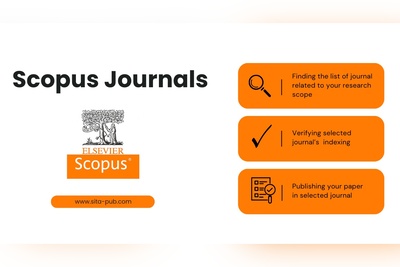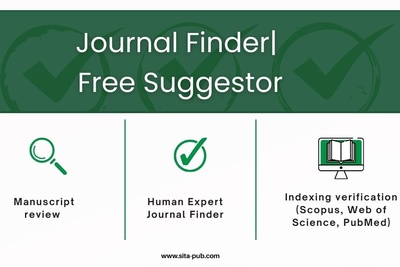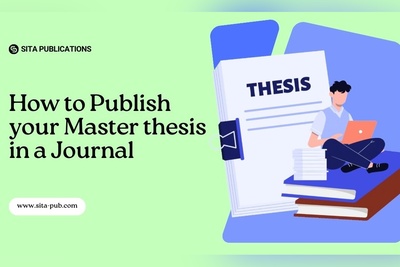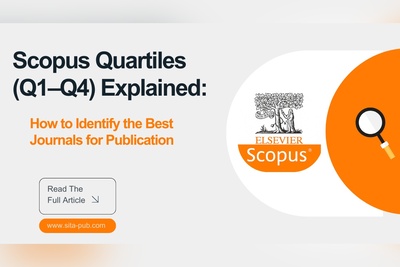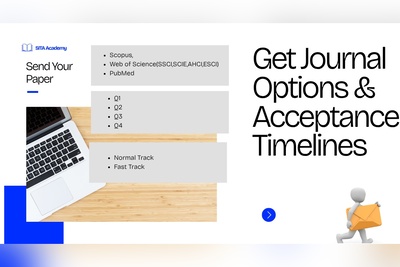Why Journals Ask for Proof of Native English Editing (and How to Get It)
Learn why journals require proof of native English editing for non-native researchers, how to get a professional editing certificate.

Publishing in reputable international journals is a major milestone for researchers worldwide. However, for those whose first language is not English, writing a high-quality research manuscript in English can be challenging. Even the most groundbreaking research can be delayed or rejected if the language is unclear, inconsistent, or contains grammatical errors.
Top-tier journals indexed in Scopus or Web of Science (SCI, SCIE, ESCI, AHCI), published by reputable houses like Elsevier, Springer, Taylor & Francis, Wiley, and SAGE, have high expectations for manuscript quality. Not only do they assess the originality and scientific contribution of your work, but they also demand high linguistic clarity.
To ensure the manuscript meets these standards, many journals now require proof of native English editing. This article explores what native English editing is, why journals ask for it, how to get a certificate, and how services like SITA Academy help researchers meet these requirements.
What is Native English Editing?
Native English editing is more than just checking grammar and spelling. It is a comprehensive language refinement process performed by a native English speaker, often with expertise in your scientific field. The main goals are to make the manuscript clear, coherent, and publication-ready.
A native English editor will typically:
Correct grammar, punctuation, and spelling
Ensure scientific terminology is used correctly
Improve sentence structure, clarity, and readability
Maintain logical flow and cohesion between sections
Align the manuscript with journal-specific style and formatting guidelines

Unlike basic proofreading, native English editing polishes your manuscript to ensure that reviewers and readers can fully understand your research without being distracted by language errors.
Why Journals Require Proof of Native English Editing

There are several reasons why reputable journals request a certificate or proof of native English editing:
1. Maintain Scientific Credibility
Even the most innovative research can be undermined by poor language quality. Journals want manuscripts that are clear, precise, and professional. Providing proof of native editing assures editors and reviewers that the research is presented clearly and professionally.
2. Streamline the Peer Review Process
A manuscript with poor English can slow down the review process. Reviewers may spend unnecessary time interpreting unclear sentences or correcting grammar, which delays feedback and decision-making. Journals prefer manuscripts that are ready for scientific review, minimizing language-related revisions.
3. Enhance Readability and Global Impact
Research published in clear English is more likely to be read, understood, and cited by an international audience. A well-written manuscript improves the visibility and impact of your work.
4. Meet Publisher Standards
Major publishers like Elsevier, Springer, and Wiley have strict language requirements. Journals often request proof of native English editing as a standard part of the submission process to maintain their quality standards.
5. Reduce Rejection and Revision Risks
Manuscripts with poor English are often returned for major revisions or even rejected outright. A native English editing certificate demonstrates that the language has already been professionally reviewed, reducing the likelihood of delays due to linguistic issues.
What Does a Native English Editing Certificate Include?
When a manuscript is edited by a professional native English editor, most services provide a formal certificate. A typical Native English Editing Certificate contains:
Editor’s Name and Credentials: Confirms that the editor is a qualified native English speaker
Statement of Editing: Declares that the manuscript has been professionally edited for language, clarity, and readability
Manuscript Title: Specifies the research article that was edited
Date of Editing: Confirms the time of service for journal submission
This certificate can then be submitted to the journal either during submission or upon request after the manuscript passes initial checks.
How to Obtain a Native English Editing Certificate
Here’s a practical step-by-step guide for researchers:
Step 1: Choose a Reputable Editing Service
Select a service that:
Employs native English speakers with scientific expertise
Offers journal-specific editing aligned with your target journal’s guidelines
Provides a formal certificate upon completion
Step 2: Submit Your Manuscript
Provide the full manuscript along with:
The target journal name
Any specific journal formatting guidelines
Notes on areas requiring special attention
This ensures the editor tailors the language and style for the intended journal.
Step 3: Review the Edited Manuscript
After editing, carefully review the manuscript. While the editor corrects language and style, it is important to verify technical accuracy and ensure that no scientific meaning has been altered.
Step 4: Receive the Editing Certificate
A reputable editing service will provide a formal certificate confirming the manuscript has been edited by a native English-speaking professional. This certificate is often required by journals during submission.
Step 5: Submit to the Journal
Include the certificate with your manuscript if requested. This helps demonstrate compliance with the journal’s language standards and enhances the chances of smooth acceptance.
Native English Editing Services at SITA Academy
SITA Academy specializes in providing professional native English editing services for academic researchers across all scientific fields. Here’s why our services are trusted:
1. Experienced Native English Editors
Our team consists of native English-speaking editors with expertise in scientific writing, journal standards, and discipline-specific terminology.
2. Journal-Specific Editing
We tailor every manuscript to meet the style and formatting requirements of Scopus- and Web of Science-indexed journals, including SCI, SCIE, ESCI, and AHCI publications.
3. Editing Certificate Provided
After the editing process, researchers receive an official certificate of native English editing, which can be submitted to the journal as proof that the manuscript has been professionally reviewed.
4. Fast and Reliable Service
We offer rapid turnaround times for researchers seeking to submit their work quickly, without compromising quality.
5. Increase Acceptance Chances
By using SITA Academy’s services, researchers reduce the risk of language-related revisions, allowing reviewers to focus solely on the scientific content.

Practical Tips for Researchers
Plan Ahead: Submit your manuscript for native editing well before the journal deadline to allow time for review and adjustments.
Choose the Right Service: Not all editing services are equal—select a certified, native-speaking, science-specialized service.
Follow Journal Guidelines: Ensure your manuscript formatting and references comply with journal requirements before editing.
Keep a Copy of the Certificate: Some journals may request it even after submission.
Combine Editing with Proofreading: Native editing ensures clarity, while proofreading fixes minor errors before final submission.

Conclusion
For non-native English researchers, providing proof of native English editing has become an essential requirement for high-impact journals. It ensures your manuscript is clear, professional, and ready for scientific review, minimizing the risk of rejection due to language issues.
Services like SITA Academy make this process straightforward by offering:
High-quality native English editing
Journal-specific formatting and style adjustments
A formal certificate of editing recognized by international publishers
By investing in native English editing, researchers can focus on the quality of their research, improve their chances of acceptance, and ensure that their work reaches a global audience effectively.
Verified Contact Channels
If you have any questions, inquiries, or would like to learn more about our services, please don't hesitate to reach out to us. Our dedicated team is ready to assist you.







